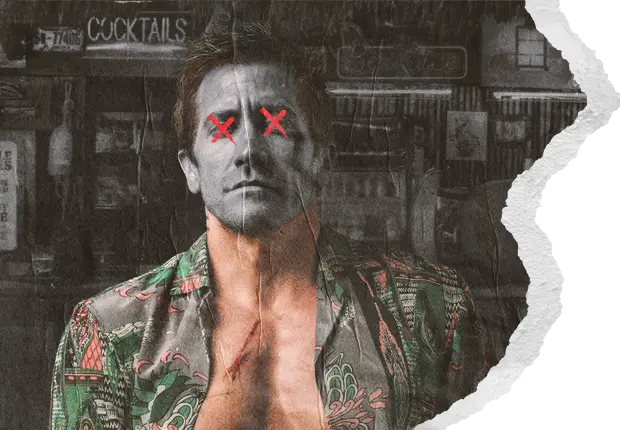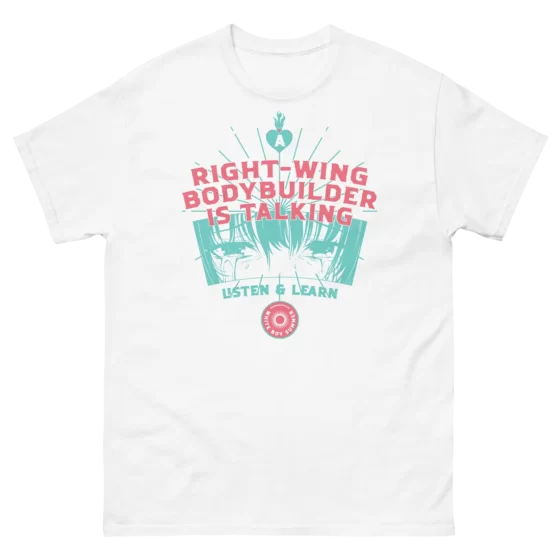Road House 2024: The Good, the Bad, and the Ugly
I’m late in seeing Doug Liman’s remake of Road House because I was quite certain I wouldn’t like it. And I was right. That the director of The Bourne Identity—the fight sequences of which are still some of the best ever filmed—could also make this movie has to be an indicator of decline, either of his personal career or of the industry in general, or both. Such is also the case with Ridley Scott, who went from making some of the greatest films of the 80s and 90s to shitting all over history in the name of leftist revisionist values in his most recent films. I’m going to shit on Road House 2024 to explain why I have a negative opinion of it, but the main point of this essay is to explore how it reflects the spirit of the times, and to extract some good elements from an otherwise bad film, in the hope of showing how good elements could be extracted from otherwise bad times to be extrapolated and amplified into something better.
There have been several different styles of “remakes” in cinema. At one extreme, Gus van Sant remade Alfred Hitchcock’s Psycho shot-for-shot, a project generally considered a pointless failure, which has not been tried again since. At the other extreme you have complete makeovers such as The Departed, which takes its basic framework from the Hong Kong film Infernal Affairs but changes so much that it is very much its own film, and very much superior to the original in my opinion. (I know there are passionate partisans of Infernal Affairs, but save it—Scorsese is King.) There are also what might be called covert remakes, in which the source material is not overtly acknowledged at all, but those in the know can see it. Examples include Reservoir Dogs, which adapts numerous elements from Ringo Lam’s City on Fire; Nicholas Wending Refn’s Drive, which riffs on Walter Hill’s The Driver; and Jim Jarmusch’s Ghost Dog, which takes elements from Melville’s Le Samourai. In many cases these are simply directors paying homage to great films which inspired them.
A good remake should have elements of homage and respect for the original, and most do. One relatively standard way is to have cameos from stars of the original film or television show. You know it’s coming, but you relish it anyway, which is why they often save it for the end of the film, as when Ben Stiller and Owen Wilson buy a car from the original Starsky and Hutch, or Dirk Benedict and Dwight Schultz show up at the end of The A-Team. There are no such cameos in Road House 2024. Granted, stars Patrick Swayze and Ben Gazzara are long dead, but they could have had any of a dozen other original cast members show up in a small role. Aside from being a treat for fans, cameos are a way to give some money to the people who made the original film great. They should have done this, but for some reason they did not.
One rather obvious option would have been to have John Doe, who had a supporting role in the original film as Brad Wesley’s nephew, play some music in one of the bar bands, since he’s primarily a musician best known as a member of L.A. punk band X. The 1989 film memorably featured blind bluesman Jeff Healey as the house entertainment. Because of his blindness—which was real, Healey had to have both eyes removed when he was only one year old—his character had elements of the blind seer archetype, most famously embodied by Tiresias in Greek mythology. Healey was the only member of the Double Deuce staff who knew Dalton before, and he is the one who announces who he is after his first brawl in the bar. “The name—is Dalton.”
In RH2024 there is no main musician, just a rotation of bands playing sometimes decent but forgettable blues. None of the musicians have roles in the film as actual characters like Healey did, and the film is poorer for that. It’s also a shame that the new film doesn’t feature a cover of The Doors’ “Roadhouse Blues” like the original did, but maybe that’s for the best since none of these musicians have Healey’s chops, and it would likely have been a very tepid cover version, like the unfortunate rendition of Metallica’s “Enter Sandman” that plays over the final fight scene, or the truly awful cover of Sublime’s “What I Got” sung by a large black woman.
The other difference between the musicians in the two films is racial. In the original film, Dalton makes himself known to Healey by saying “You play pretty good for a blind white boy,” to which Healey responds knowingly, “Yeah, and I thought you’d be bigger.” In the new film, the musicians are all black, as is the owner of the bar, as are the friendly business owners in the town to whom Dalton takes a liking. It isn’t simply a matter of “colorblind casting” but rather of injecting a racial element into the story which was not there at all in the original. Doubtless someone noticed that the entire cast of the original film was white, and since that is considered ipso facto wrong and immoral, they felt this had to be “remedied.”
In the new film, the owner of the Road House is Frankie, the niece of the original founder, a kind of black pioneer who opened the bar in the 1960s. It’s strongly insinuated that he had to fight against racism to do this, and Frankie has a framed photo of Martin Luther King on her wall. The bad guys of course are all white, and while they are not portrayed as explicitly racist—we never hear an N-word or any reference to the race of Frankie or the others—the fact is that it is no longer necessary to brand someone a racist by showing them say or do racist things: they’re implicitly racist because just being white is enough. Decades of DEI critical race theory indoctrination has had its effect, and it’s now a given that, as the famous fat lady in the Paypal meme wrote on her whiteboard, “All White People Are Racist.”
Except Dalton. And the other white employees of the Road House. As in the original film, Dalton trains some of the other bouncers and teaches them to be better fighters. The two main ones are a black and white duo, played by two scrawny zoomer kids who are completely unbelievable as bar bouncers who could handle bigger guys. Some of their fight scenes remind me not of 80s action films but of 80s kid movies where the little six year old uses his special ninja skills to beat up three adult men. But their lack of muscle is presumably made up for with moral strength since they are on the side of good. So what we end up with is a multiracial team led by Dalton the Good White against the Bad Whites. It’s in every way a continuation of the trope first identified by Jonathan Bowden years ago: “They use the ideology of the Marine Corps,” i.e. train to be the toughest and the best, “to fight for liberal causes.”
Speaking of the Marine Corps, Gyllenhaal’s Dalton comes across more like a combat vet than an MMA guy. He plays the character like John Rambo in First Blood, taciturn until he’s pushed too far and someone “makes him angry.” But even after the Bruce Banner Incredible Hulk moment, his emotional expression remains minimal. Part of the reason for this is that the original film had a mentor character played by Sam Elliot, whose murder becomes the catalyst that pushes Dalton over the edge. The mentor is entirely lacking here, and the substitution of the bookstore owners being attacked as the trigger of Dalton’s rage simply isn’t believable. Likewise, the change in Dalton’s backstory, from killing a man in self-defense to killing his friend in a moment of uncontrolled rage, is in no way an improvement. But it does fit with the other changes to the story insofar as it makes Dalton guilty, a sinner who needs to atone, which explains his otherwise inexplicable sacrifices for the people at the Road House.
Could Gyllenhaal’s Dalton know that about himself, though? The original film has Dalton as an intelligent man, a philosophy major who makes a living dealing with violence, something almost out of Mishima’s Sun and Steel. Here he’s just a fighter who never shows any hint of thoughtfulness or reflection other than parroting the original character’s “Nobody ever wins a fight.” If 1989 Dalton had gone to this town and stumbled upon a bookstore, he would have looked at the books and probably gone home with a few. The new Dalton couldn’t care less, the books may as well be tableware.
The new Dalton isn’t especially interested in women either, but maybe that has something to do with the women in the film. As someone who saw the original as an adolescent, I can tell you that we didn’t just enjoy it for the fight scenes. The strip tease scene with Denise the blonde bimbo was a treat, and the “I’m not wearing any panties” reveal when Dalton takes Elizabeth home was hot. Nude scenes were pretty standard in 80s action films—T&A really stood for tits and action—but these were a step above. The new film has no nude scenes other than a shot of Conor McGregor’s ass—doubtless the writers saw this as another way to subvert the “patriarchal sexist implicitly white heteronormativity” of the original. But the lack of naked chicks is ok, because there are no pretty women in the film that we’d want to see naked. Daniela Melchior is attractive but her character is not, being too much of a “tough girl” to exude any of the sensuality that Kelly Lynch did in the same role. The only other women in the film are the bar owner, the obese bartender (a really poor substitute for the not attractive but cute and squirrelly Carrie played by Kathleen Wilhoite) and the obese bar band singer. Together with the men of the Road House, who mostly look immature with varying degrees of metabolic syndrome gayface, they form the ragtag group of ugly-but-beautiful-on-the-inside, weak-but-morally-strong Good Guys that Dalton is here to protect and serve. And whereas the original ending had all the townsfolk come together to back up Dalton à la High Noon, here Dalton is on his own. I guess they don’t have to help because they’re just entitled to his sacrifice.
The bad guys in the film are slightly more realistic as fighters, most of all Conor McGregor, as one would expect. McGregor basically plays a comical exaggeration of his own ego, and it works. I was surprised that he carried the role as well as he did, since it’s his first acting job. It’s a given that he would be a natural in the fight scenes, but he has a good presence in front of the camera overall, a skill that he doubtless honed in his highly publicized MMA career. The other bad guys at least have a bit of muscle and look like they could actually be thugs, at least not any less so than the Wesley crew in the original film. The Rotten Tomatoes consensus says the film “happily [replicates] the original’s emphasis on cheesy brawn over narrative brains.” But this is wrong. The original stood out precisely for lack of brawn—“I thought you’d be bigger” (compare Patrick Swayze to Stallone, Schwarzenegger and Van Damme, who were the big action stars at that time)—and the narrative had far more brains, more traditional storytelling tropes that actually work, than the new version. Another review in IndieWire says “it moves with the same unselfconscious stupidity that fueled so many of the ’80s blockbusters we remember so fondly.” But it doesn’t at all. The conscious change of an apolitical action film into a barely concealed Social Justice Warrior story is the opposite of unselfconscious, although it is indeed quite stupid. But that isn’t what the reviewer meant; he meant that the action is stupid, the muscles are stupid, the men are stupid.
Which brings me at last to the good elements of the film: the action, the muscles, the men. The fight scenes are not nearly as good as The Bourne Identity and not as good as those in the original film either, simply because of the new film’s reliance on CGI rather than good old fashioned choreography. What is better than in the original film is Dalton’s physique. Gyllenhaal is ripped, as he was in Southpaw where he also played an MMA fighter, and has a good twenty pounds more muscle mass than Patrick Swayze did. Swayze’s Dalton was a skinny scrapper, a not uncommon type in real life, but Gyllenhaal looks more intimidating, which is probably why they couldn’t reuse the “I thought you’d be bigger” line—he is bigger. Likewise, Conor McGregor is a hulk, looking more muscular than he did in his MMA career.
Two guys with good physiques do not redeem the film, especially because you get the distinct feeling that their strength and attractiveness is put in service to the weak and unattractive, that instead of heterosexual guys looking at titties in the original, this film is for women and gay men to look at Jake’s abs and Conor’s ass. But what I want to point out is that one difference between 1989 and 2024 is how far the science of bodybuilding has come. In the 80s, guys like Stallone, Schwarzenegger and Van Damme were rare, which is part of what made them stars. Now, training and nutrition science (and good old fashioned anabolic steroids) have made a good physique more reliably attainable for those willing to do the work. I’m sure that Hollywood is full of ripped actors who nonetheless can’t get work, because their physique is now a dime a dozen.
The fight scenes in Road House 2024 should have been better, but overall fight scenes in movies are a lot better than they were in 1989, and a big part of why is because fight science made a quantum leap forward with the advent of UFC and mixed martial arts. Asian martial arts looked exotic and badass in the 70s and 80s when no one knew anything about them, but now that decades of UFC competition has forced individual styles to put up or shut up, audiences know a lot more about what real fighting looks like, and so do filmmakers. The original Road House has Dalton doing Tai Chi in the yard while old man Emmett looks on perplexed. We can’t imagine Gyllenhaal’s Dalton doing Tai Chi, not only because he isn’t the contemplative type but because we know that an MMA fighter wouldn’t be doing that: It has no practical application except perhaps as a meditation.
My purpose in mentioning these two elements is that this is the world we live in now: you are surrounded by the ugly, the weak, the botched, the stupid. And lest you get too cocky, parts of you are ugly, weak, botched and stupid. But if you are not content with this, if you have an aspiration to achieve something higher, to make yourself into something stronger and more beautiful, there have never been more tools at your disposal than there are right now. Those who comprise the herd have never been weaker as individuals (it’s their strength in numbers than can be daunting), and so those who make themselves stand out have never been more different. When Dalton arrives in Glass Key and soon finds that everyone knows who he is and is talking about him, the explanation is that “it’s a small town.” But that isn’t why. The reason is because there is no one else like him there, not even among the Brandt crew of bad guys (they have to call in Conor from somewhere else). He is another species of man—it’s almost reminiscent of the stories of people encountering the Buddha, who were compelled to ask not “Who are you” but rather “What are you?”
*
To make up for the rather serious defects of Road House 2024, I propose that rather than a sequel, as is apparently in the works now, they should make a prequel. It should tell the story, not of Dalton, but of another young man. He is a soldier, trained in the ways of war, and he serves his country honorably and courageously in Korea in the 1950s. After the war, he returns home and finds only a small town with almost nothing in it. This man, through his cunning, his domineering strength, his force of will, builds up that town into something. He brings the mall there. He gets the 7-Eleven. He gets the Fotomat, and he even has an eye to get JC Penney to come there someday. The most beautiful home in town is his. The most beautiful women are his. He commands the loyalty and respect of his army, who enforce his will. He rules this town as his own fief, like an ancient Greek tyrant, the modern living embodiment of the philosophy of Critias. His only fear is that one day, a petty Socratic interloper will show up and attempt to overthrow the state of nature with moral custom …
Are you ready for that story?
































